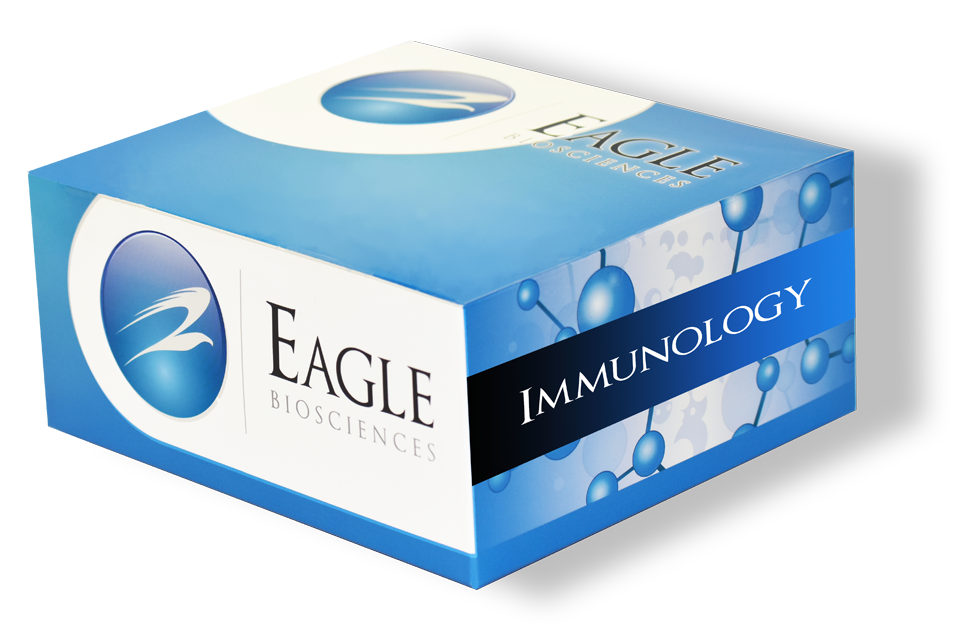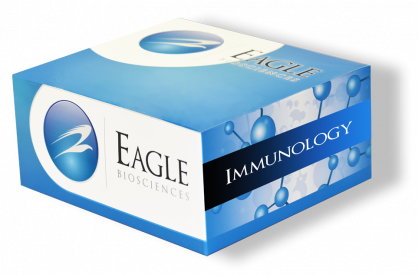SeroMP Recombinant IgA ELISA Assay
The SeroMP Recombinant IgA ELISA Assay is For Research Use Only
Size: 1×96 wells
Sensitivity: Cut-Off Control
Incubation Time: 2 hours
Sample Type: Serum
Sample Size: 10 µl
Alternative Name: Mycoplasma pneumoniae
Assay Principle
SeroMP Recombinant microtiter plates are supplied coated with M. pneumoniae recombinant antigens. The serum to be tested is diluted and incubated in the SeroMP™ Recombinant plate. In this step M. pneumoniae specific antibodies are bound to the immobilized antigens. Non-specific antibodies are removed by washing. Anti-human IgA conjugated to horseradish peroxidase (HRP) is added. In this step the HRP-conjugate is bound to the prebound antigen-antibody complex. Unbound conjugate is removed by washing. Upon the addition of TMB-substrate, the substrate is hydrolyzed by the peroxidase, yielding a blue solution of the reduced Substrate. Upon the addition of the stop solution, the blue color turns yellow and should be read by an ELISA reader at a wavelength of 450/620nm. The absorbance is proportional to the levels of the specific antibodies that are bound to the coated antigens.
Related Products
SeroMP Recombinant IgM ELISA Assay
SeroMP Recombinant IgG ELISA Assay
SeroCP C. pneumoniae IgA ELISA Assay Kit
Assay Background
M. pneumoniae is a common cause of community-acquired pneumonia, often characterized by gradual onset of headache, fever, malaise and, most typically, dry cough. M. pneumoniae is common in all age groups, however, it is most common in the first two decades of life and is rare in children under the age of four. It has been reported as the cause of up to 30% of all pneumonia cases. M. pneumoniae has also been associated with non respiratory diseases as meningitis, encephalitis, pancreatitis, sensorineural hearing loss, and acute brainstem syndrome.
Due to its common occurrence, one should consider M. pneumoniae in all cases of pneumonia, but being the same symptoms for different agents, additional diagnostic tools, such as serological tests, are required. The ELISA technique is sensitive, specific and enables a differential determination of specific IgG, IgA and IgM antibodies. In respect to diagnosis and treatment, the most prominent structural feature of MP is the lack of a cell wall. It has been shown that surface-exposed polypeptides elicit an immunogenic response, in particular those that are involved in the attachment organelle of MP. This attachment organelle is composed of a complex of polypeptides, in which P1 Cytadhesin Protein has a major role. (1; 4; 10) Due to its high immunogenicity P1 is a paradigm for utilizing a definitive antigen in serology-based diagnostic systems, attempting to improve various parameters of assay performance. A common way to improve test performances by using highly immunogenic polypeptides like the P1 is incorporating these polypeptides in the tests as recombinant antigens. Indeed, several polypeptides have been identified in the literature as good candidates for this purpose.
M. pneumoniae specific IgM antibodies rise early after onset of the disease, reach peak levels in one to four weeks, then decline to diagnostically insignificant levels within a few months (7). Due to the early appearance and relatively short lifetime of IgM antibodies, their detection allows the diagnosis of acute infection using a single serum sample. Young patients tend to have higher IgM levels than adult. IgG levels rise slower than IgM, but remain elevated much longer, so a significant increase in two consecutive samples taken at least 2 weeks apart, may indicate current infection or re-infection even in the absence of IgM. IgA antibodies are seen at higher levels in elderly patients (7) and may be more useful than IgM for the diagnosis of current infection in adults.
The SeroMP™ Recombinant IgG, IgA and IgM tests enable early and accurate detection of M. pneumoniae infection.
Cross Reaction
Hospitalized patients, infected with respiratory tract pathogens: Chlamydia pneumoniae and EBV who were diagnosed by commercial serology kits, were also tested with the SeroMP kit. Most of the sera were found negative, there was no significant cross-reaction detected.
Package Inserts
Please note: All documents above are for reference use only and should not be used in place of the documents included with this physical product. If digital copies are needed, please contact us.


